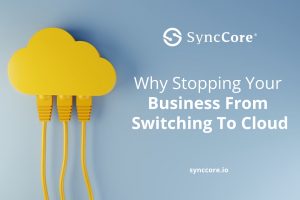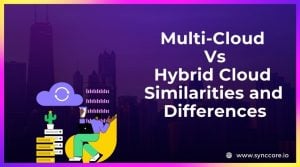Table of Contents
6 Edges Of Advanced Load Balancers For The Cloud
Application traffic load balancing has been around for a long time. However, as more businesses migrate to the private & public cloud, it is undergoing significant changes. Load balancing is the distribution of a set of jobs across completely distinct computing units in parallel computing to make the overall technique easier to execute and cost-effective. Making ensuring that no single server is overburdened and that the load is distributed evenly improves the responsiveness and usability of applications and webpages for users
In 1990, specific hardware was introduced to disperse traffic over a network as part of the load reconciliation concept. With application delivery controllers events, load reconciliation became a more secure convenience, allowing apps to run uninterrupted even during peak times.
Hardware appliances, Virtual appliances, & Complete software native load balancers are the three types of application delivery controllers. Because the hardware counterpart operates with improved Quantifiability, Practicality, and Suppleness, software-based application delivery controllers have become acclimated to executing jobs in this era of cloud computing.
Functions of load balancers:
Generally, the load balancer functions as a ‘traffic controller’ for your server, directing requests to an external server capable of quickly fulfilling the request. This ensures that needs are felt quickly and that no server is overworked, resulting in performance degradation.
Load balancer aids in determining which server will handle requests quickly in associate firms’ idea to satisfy appliance demands. This results in significantly improved user expertise.
By serving to servers move knowledge quickly, the load balancer manages data flow between the server and endpoint device. The load balancer also evaluates the server’s request-handling health and if necessary, eliminates the problematic server until it is redesigned.
A load balancer can be a hardware device or an application-based virtual one, and the servers can be physical or virtual. Whenever a server is down, the requests are forwarded to the other servers, and when a replacement server is installed, the demands are automatically moved to it.
Types of Load Balancers:
- Network Load Balancer
- Application Load Balancer
- Global Server Load Balancer
- Hardware Load Balancers
- Software Load Balancers
- Virtual Load Balancers
6 Edges Of Advanced Load Balancers for the Cloud:
- Enhanced Performance:
Burden balancers reduce the extra load on a single server and ensure smooth operations and responses, giving customers a better experience.
- Resilience:
The failed and under-performing pieces are immediately replaced, indicating that the instrumentation requires service for a short or no amount of time.
- Scalability:
Load balancers make changing your server infrastructure without affecting services a breeze
4. Predictive Analysis:
Software load balancers will predict traffic bottlenecks before they happen.
- Big Data:
The massive knowledge generated by international users is examined for actionable insights to drive better and more informed business decisions.
SyncCore is the most affordable cloud service provider company. SyncCore offers 300% lower costs as compared to other service providers like AWS, Azure, and Google cloud. If you’re interested in our advanced load balancer service! contact us right now at +1 833 612 0999 or send a mail at [email protected] To know more please visit our website www.synccore.io
We at SyncCore have high-level experts who look after your cloud performance, so join the SyncCore Cloud platform.
Read More: What is Cloud DDoS Protection?



